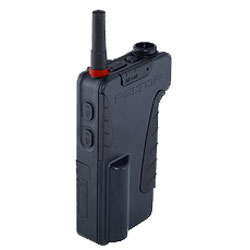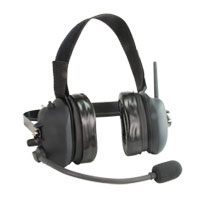What is DMR?
Digital Mobile Radio (DMR) is an open digital radio standard produced by European Telecommunication Standards Institute (ETSI). Being capable of voice, data and a range of other features and applications in conventional and trunking mode, DMR has received global recognitions.
As a premium member of DMR Association, Hytera has mastered this technology. All our DMR products fully meet ETSI DMR requirements and feature innovative applications.
The Digital Advantages and Features
- Improved Digital Audio Quality and Range. One of the reasons that DMR has an excellent range performance is that a great deal of effort was put into selecting Forward Error Correction (FEC) and Cyclic Redundancy Check (CRC) coders when developing the standard. These coders enable receiving radios to detect and automatically correct transmission errors by analysing bits inserted into messages that enable the receiving radio to tell if there is an error. The DMR standard specifies over 14 different coders to be used, each matched to different types of traffic that is being transmitted. Through the use of coders and other techniques, digital processing is able to screen out noise and re-construct signals from degraded transmissions. Users can hear everything being said much more clearly — increasing the effective range of the radio solution and keeping users responsive to changing situations in the field.

- Increased Channel Capacity. One of the principle benefits of DMR is that it enables a single 12.5kHz channel to support two simultaneous and independent calls, achieved using TDMA (Time Division Multiple Access). TDMA retains the 12.5kHz channel width and divides it into two alternating timeslots A and B where each timeslot acts as a separate communication path or channel.

- Reduced Equipment Costs. Another advantage of the DMR TDMA approach is that you get two communications channels with one repeater, one antenna and a simple duplexer. Compared to Analogue or FDMA solutions, two-slot TDMA allows you to achieve 6.25 kHz efficiency while minimising investments in repeaters and combining equipment. The required equipment of the two approaches for a simple system is shown below.

- Longer Battery Life. One of the biggest challenges with mobile devices has always been battery life. In the past, there have been limited options for increasing the talk time on a single battery charge. Two-slot TDMA, however, offers a good way forward. Since an individual call uses only one of the two timeslots, it requires only half of the transmitter’s capacity. The transmitter is idle half of the time — that is, whenever it’s the unused timeslot’s “turn”.

- Enhanced Privacy. On an analogue channel, the audio signal can still be monitored even if it’s not easy to identify. Digital offers inherent protection against casual eavesdropping using a scanner. On a digital channel the audio signal cannot be heard is the signaling or ID doesn't match - over 16 million different ID's available!

- Advanced Digital Voice Features
- All Call - Ensure entire radio fleet is instantly provided with critical information
- Group Call - Helps ensure critical work group are fully informed
- Private Call - Allows call to be directed at individuals
- Channel Scan - Supporting mix mode scanning (analogue & digital channel). Helps ensure all relevant calls are heard
- PTT ID & Aliasing - Allows the receiving party to instantly identify the caller and respond accordingly
- Talk around - Enable the radio to communicate directly with one another
- Emergency - An emergency call can be confirmed to maximise the employee's safety and accelerate incident response
- Integrated DATA Functions
- Text Messaging - Editable text messaging (one to one, one to group and one to all). Free entry up to 256 characters
- Preprogrammed Quick Text - Entered via CPS (Customer Programming Software)
- 3rd Party API (Application Interface) - There are a growing number or applications available







